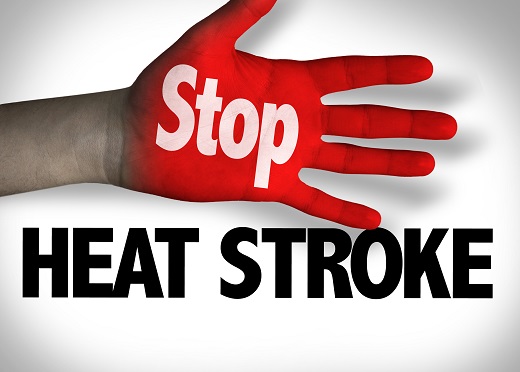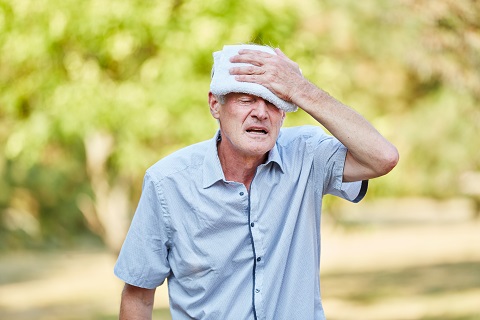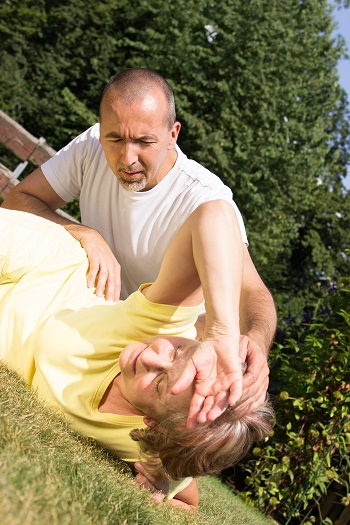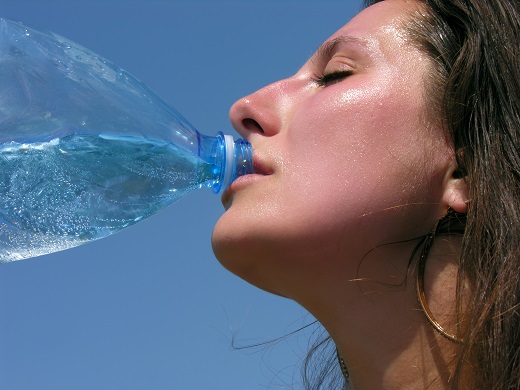 During the warmer months, those of us certified in First Aid start to review the signs of heatstroke. This preventable condition is most common in athletes and those who work or spend active time outdoors during the hot season, and wind up over exerting themselves to the point that core temperature elevate to 104° F or higher.
During the warmer months, those of us certified in First Aid start to review the signs of heatstroke. This preventable condition is most common in athletes and those who work or spend active time outdoors during the hot season, and wind up over exerting themselves to the point that core temperature elevate to 104° F or higher.
That being said, heatstroke is also a risk for babies, the senior population and those who are are weakened by existing health conditions. Simply sitting outside in the sun at a ballgame or a graduation ceremony is enough to cause heatstroke in someone who’s vulnerable.
Know Signs of Heatstroke & Seek Emergency Attention
While moving a person with suspected heatstroke out of the sun, into the shade and (optimally) in a cooler environment is Step One, this condition always requires emergency medical attention. If left too long and/or untreated, it can cause damage to the body’s organs – increasing the risk of heatstroke-related complications. In worst case scenarios, heatstroke is fatal.
If you notice any of these signs of heat exhaustion or heatstroke in yourself or another individual, call 911 or take them to an ER or Urgent Care facility ASAP.
Heat exhaustion can be the first phase of heatstroke
 Some individuals (but not all) with heatstroke exhibit signs of heat exhaustion that go unnoticed. Symptoms of heat exhaustion include:
Some individuals (but not all) with heatstroke exhibit signs of heat exhaustion that go unnoticed. Symptoms of heat exhaustion include:
- Irritability
- Fatigue or confusion
- Profuse sweating that can shift to a cool clammy sensation
- Headache or light-headedness
- Muscle cramping
- Nausea or vomiting
While heat exhaustion is usually reversible by getting into the shade, cooling off and slowly hydrating, it’s best to seek medical attention to be on the safe side.
Heatstroke can happen suddenly and without warning
While heat exhaustion will move into heatstroke if not addressed, not all those who have heatstroke demonstrate prior symptoms. In many cases, heatstroke occurs very suddenly and without much warning, which is why immediate, medical attention is so important.
The Seven Most Common Signs of Heatstroke
1. Disorientation or Agitation
Perhaps you’re talking to a parent or colleague while working or attending an outdoor event. You might notice their conversation gets more short or brisk. Maybe they simply regress to “mm-hmms” or distracted “yeahs” – seeming as if they’re disinterested or irritated. Don’t write this off as boredom or general irritation. Check in an ask, “are you okay?” and see what the response is. If they seem a little out of it, check in with a medical professional.
2. Anxiety
Similarly, those experiencing heatstroke can begin to act anxious – like a low-grade inner-panic has taken over. This is another sign it’s time to check in and assess the situation – even if you don’t know the person all that well.
 3. Fainting
3. Fainting
Anyone who faints in the sun or heat should be treated immediately for heatstroke. If you find out it was something else, that’s fine but always err on the side of caution. Before they faint, victims of heatstroke often feel very dizzy or have symptoms of vertigo so this is also a red flag that something is up.
4. Hot, Flushed, Dry Skin
While heat exhaustion is marked by profuse sweating, heatstroke can move in the opposite direction. The skin is still very hot to the touch, and appears flushed, it also gets dry – no sweat to be seen. Any decrease in sweating does not mean the person has cooled off, it means exactly the opposite and s/he needs immediate treatment.
5. Rapid Heart Rate and/or Shortness of Breath
Often, heatstroke victims have a hard time catching their breath, and/or begin taking short rapid breaths. Their heart rate may be elevated. You may be able to observe the rapid pulse rate in their neck or at their temples. Otherwise, you can do a simple check of their wrist pulse and compare it with your own – 100 beats per minute is considered elevated.
6. Nausea and/or Vomiting
Like heat exhaustion, a person with heatstroke may feel sick to their stomach and may start to vomit. Because dehydration is also a feature of most heatstroke episodes, they may experience reduced urination and can have blood in their urine or stool. This can be tricky to note if you’re with other adults, however, if you have a baby or young child in a hot environment, keep tabs on this.
7. Convulsions
Finally, a dramatic sign of heatstroke is convulsions. During the convulsions, try to keep the victim safe from hard objects or potential falls. Once convulsions cease, you can continue with routine first aid until the EMTs arrive.
Knowing these 6 common signs and symptoms of heatstroke can save a person’s life. And, as prevention is the key, do your best to avoid situations that would cause heatstroke, including using sun protection, taking plenty of shade breaks and staying hydrated.
 Check out our Heartsaver First Aid training classes to learn more about first aid treatment.
Check out our Heartsaver First Aid training classes to learn more about first aid treatment.

